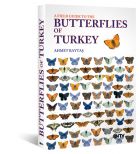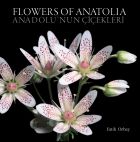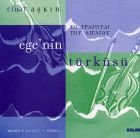Buy or gift a stand-alone digital subscription and get unlimited access to dozens of back issues for just £18.99 / $18.99 a year.
Please register at www.exacteditions.com/digital/cornucopia with your subscriber account number or contact subscriptions@cornucopia.net
Buy a digital subscription Go to the Digital EditionThey are smelly and poisonous, and trick insects into doing their dirty work; but arums and aristolochias are among the most striking wild flowers in Turkey. The botanist Andrew Byfield tracks them down on the glaring limestone peninsulas of Marmaris and in the scruffier habitats of the high Taurus Mountains
It was in April 1938, at the age of 19 and before commencing his lifetime’s study of Turkish flora, that the late Peter Davis discovered a mysterious bulbous plant out of flower while botanising on Crete. The living tuber that he presented to London’s Kew Gardens bloomed the following October, revealing it to be an autumn-flowering ‘aroid’ new to science. It was duly named Biarum davisii, the first of many newly discovered plants named in honour of the Edinburgh botanist.
Davis’ Biarum was thought to be confined to Crete until the late 1970s, when Istanbul’s Professor Turhan Baytop discovered it in a number of localities near Marmaris in Turkey’s most southwesterly corner. Around the same time, other species previously thought to be restricted to Crete and adjacent Greek islands were discovered in the same area, evidence of the former existence of land bridges linking Crete to the Turkey before the sea levels rose. The discovery in Turkey of the beautiful Arum creticum (by Professor Asuman Baytop in March 1981), the pink Tulipa saxatilis, the chrome-yellow tree flax Linum arboreum and the Cretan date palm Phoenix theoprastii represented a remarkable extension to the greographical range of these Aegean specialities…
When the summer heat made cool-headed diplomacy impossible, the ambassadors to the Sublime Porte retired to remarkable residences lining the Bosphorus. Patricia Daunt probes their rich diplomatic history, while Fritz von der Schulenburg captures the faded glory of the buildings and their grounds
The ancient art of ebru, or paper marbling, creates sinuous, swirling patterns of subtle colour which owe their appearance to processes as mysterious as the technique’s very beginnings. Ebru apprentice Ali Suat Urguplu shares his master Fuad Basar’s secrets. Photographs by Simon Upton
Cherry jam is slightly runny. Rather than adding pectin, it is better to accept that this ruby-coloured jam drips from the toast when you eat it.
More cookery features



Cihat Aşkin, violin

Cornucopia works in partnership with the digital publishing platform Exact Editions to offer individual and institutional subscribers unlimited access to a searchable archive of fascinating back issues and every newly published issue. The digital edition of Cornucopia is available cross-platform on web, iOS and Android and offers a comprehensive search function, allowing the title’s cultural content to be delved into at the touch of a button.
Digital Subscription: £18.99 / $18.99 (1 year)
Subscribe now